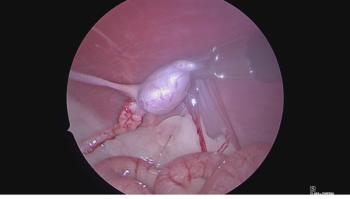
Optimizing blood flow to improve GI surgery healing
Galina Hayes, BVSc, DVSc, PhD, DACVECC, DACVS, talks about the biggest physiologic factor that influences how the intestine heals after surgery in this dvm360 interview.
In this interview highlighting her session on gastrointestinal (GI) surgery tips presented at the 2025 New York Vet Show in New York, New York, Galina Hayes, BVSc, DVSc, PhD, DACVECC, DACVS, an associate professor at Cornell University College of Veterinary Medicine in Ithaca, New York, discusses one of the most important physiologic factors that influence how a patient’s intestine heals after a surgical procedure: perfusion to the intestine. She shares ways surgeons can optimize blood flow, from carefully handling bowel margins and maintaining proper suture tension to supporting the patient’s systemic health.
The following is a transcript of the video, which has been lightly edited for clarity and cohesion.
Hayes: Hi, my name is Galina Hayes. I'm a specialty soft tissue surgeon here at Cornell University in Ithaca...New York. I've been teaching veterinary surgery for the [past] 12 to 13 years. I'm also boarded in emergency and critical care, which I find really helpful for preoperative and postoperative management of our trickier patients. Before I became a specialist, I worked in [emergency department] practice, and before that, in small animal and mixed practice....
What are some key physiologic factors that influence how the intestine heals after surgery?
Hayes: The big one is blood flow, so perfusion to the intestine. As surgeons, we can optimize healing with careful handling of the [bowel] margins...when we're suturing, either for an enterotomy or an anastomosis, to minimize congestion and inflammation and [to] keep blood flow brisk and healthy to those wound edges. Also, [we should be] controlling our suture tension so we don't inadvertently compromise blood flow with overtight sutures—just getting really nice apposition there.
Blood flow is probably one of the biggest things. We can think about it at a microlevel with the examples I just talked about, with blood flow at the wound edges. But of course, that's also dependent on the [patient's] systemic health.... Ideally, they're well hydrated, they've been fluid resuscitated if needed before surgery, and we're controlling depth of anesthesia to keep blood pressure in a nice, healthy, optimal zone. All those things in concert help us get the outcomes we're after.
Newsletter
From exam room tips to practice management insights, get trusted veterinary news delivered straight to your inbox—subscribe to dvm360.




